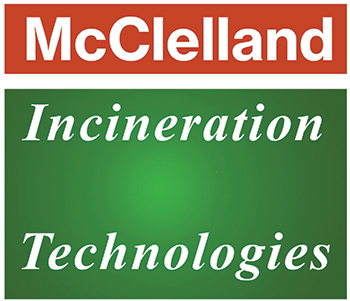 At the heart of every high-temperature incinerator lies a crucial, yet often overlooked, component: the refractory lining. Far more than just an internal shell, this specialized material is the unsung hero that enables the incinerator to withstand extreme temperatures, aggressive chemical environments, and abrasive forces inherent in waste combustion. For industries relying on thermal waste treatment, understanding the profound impact of refractory lining on an incinerator’s durability, performance, and overall lifespan is not just technical knowledge—it’s a strategic imperative.
At the heart of every high-temperature incinerator lies a crucial, yet often overlooked, component: the refractory lining. Far more than just an internal shell, this specialized material is the unsung hero that enables the incinerator to withstand extreme temperatures, aggressive chemical environments, and abrasive forces inherent in waste combustion. For industries relying on thermal waste treatment, understanding the profound impact of refractory lining on an incinerator’s durability, performance, and overall lifespan is not just technical knowledge—it’s a strategic imperative.
The Incinerator‘s Shield: Why Refractory is Paramount
The combustion chamber of an incinerator is a brutal environment. Temperatures can soar well beyond 1000°C, and the waste being processed can introduce corrosive gases, molten ash, and abrasive particles. Without a robust refractory lining, the metallic outer shell of the incinerator would quickly warp, melt, or corrode, leading to catastrophic failure.
The refractory lining serves several vital functions:
- Thermal Insulation: It acts as a barrier, preventing heat from escaping the combustion chamber. This not only protects the structural integrity of the steel shell but also maintains the high temperatures necessary for efficient and complete waste destruction.
- Protection from Chemical Attack: Waste combustion often generates acidic gases and molten salts that are highly corrosive. Specialized refractory materials are engineered to resist these chemical reactions, preventing degradation.
- Abrasion Resistance: The movement of waste, ash, and combustion gases can cause significant wear. Refractory linings are designed to withstand this abrasive action, particularly in areas like hearths and chutes.
- Structural Integrity: It helps maintain the structural shape of the combustion chamber under extreme thermal loads.
The Science Behind the Shield: Types of Refractory Materials
The selection of refractory materials is a precise science, tailored to the specific demands of the incinerator’s design and the waste type it processes. Common types include:
- Fireclay and High-Alumina Bricks/Castables: These are workhorses for many applications, offering good thermal insulation and resistance to general high temperatures. High-alumina variants provide enhanced strength and chemical resistance.
- Silicon Carbide (SiC): Known for its exceptional thermal conductivity, abrasion resistance, and non-wetting properties (resisting molten ash adhesion), SiC is often used in critical high-wear areas like grate surfaces and lower furnace walls.
- Chrome-Magnesia: Valued for its excellent resistance to basic slags and molten ash, often used in zones where chemical attack from ash is prevalent.
- Insulating Firebrick (IFB) and Ceramic Fiber: Primarily used behind denser refractories for additional insulation, reducing heat loss through the outer shell.
The precise combination and installation of these materials dictate the lining’s ability to endure the incinerator‘s operational life.
Impact on Durability, Performance, and Lifespan
The quality and condition of the refractory lining directly dictate an incinerator:
- Durability and Lifespan: A well-designed and properly maintained refractory lining can significantly extend the operational life of the entire incinerator system, delaying costly major overhauls or replacements.
- Performance and Efficiency: Intact refractory ensures efficient combustion by maintaining stable, high internal temperatures, leading to better waste destruction rates and reduced auxiliary fuel consumption.
- Safety: A compromised lining can lead to hot spots on the outer shell, posing fire risks and structural integrity issues.
- Maintenance Costs: While refractory replacement is a significant maintenance item, proactive monitoring and expert repair can prevent premature failure and more expensive emergency shutdowns.
An Expert’s View: Precision in Refractory Management
From an expert’s perspective, managing refractory lining is not a one-time installation; it’s a continuous process of informed selection, precise installation, vigilant monitoring, and timely maintenance. Factors like waste composition variability, thermal cycling (heating up and cooling down), and the specific operating temperatures all impact refractory life. Regular inspections, thermographic imaging, and understanding material limitations are crucial for predicting wear and planning timely repairs or replacements.
At Mc Clelland Engineers Pvt. Ltd., we understand that the long-term success of an incinerator hinges on the integrity of its refractory system. As a leading incinerator manufacturer with decades of experience, our commitment to durability and performance begins in the design phase. We meticulously select and specify high-quality refractory materials tailored to the specific waste characteristics and operational demands of each advanced incineration and thermal desorption system we engineer. You can learn more about our robust and reliable incinerator solutions by visiting our official website, https://mcclellandindia.com/.
Our expertise extends beyond manufacturing; it encompasses providing guidance on proper refractory installation, curing, and long-term maintenance practices. We ensure that our systems are not only built with superior internal linings but also designed for accessibility, facilitating efficient inspection and repair when needed. Discover more about our manufacturing capabilities and product range that emphasize long-term operational excellence at https://incineratormanufacturer.com/.
Investing in the Core of Your Incinerator
The refractory lining is the unsung hero, the vital core that protects and enables your incinerator to perform its critical function. Investing in high-quality refractory materials and adopting an expert-led approach to its management is an investment in the incinerator’s longevity, operational efficiency, safety, and ultimate peace of mind.

